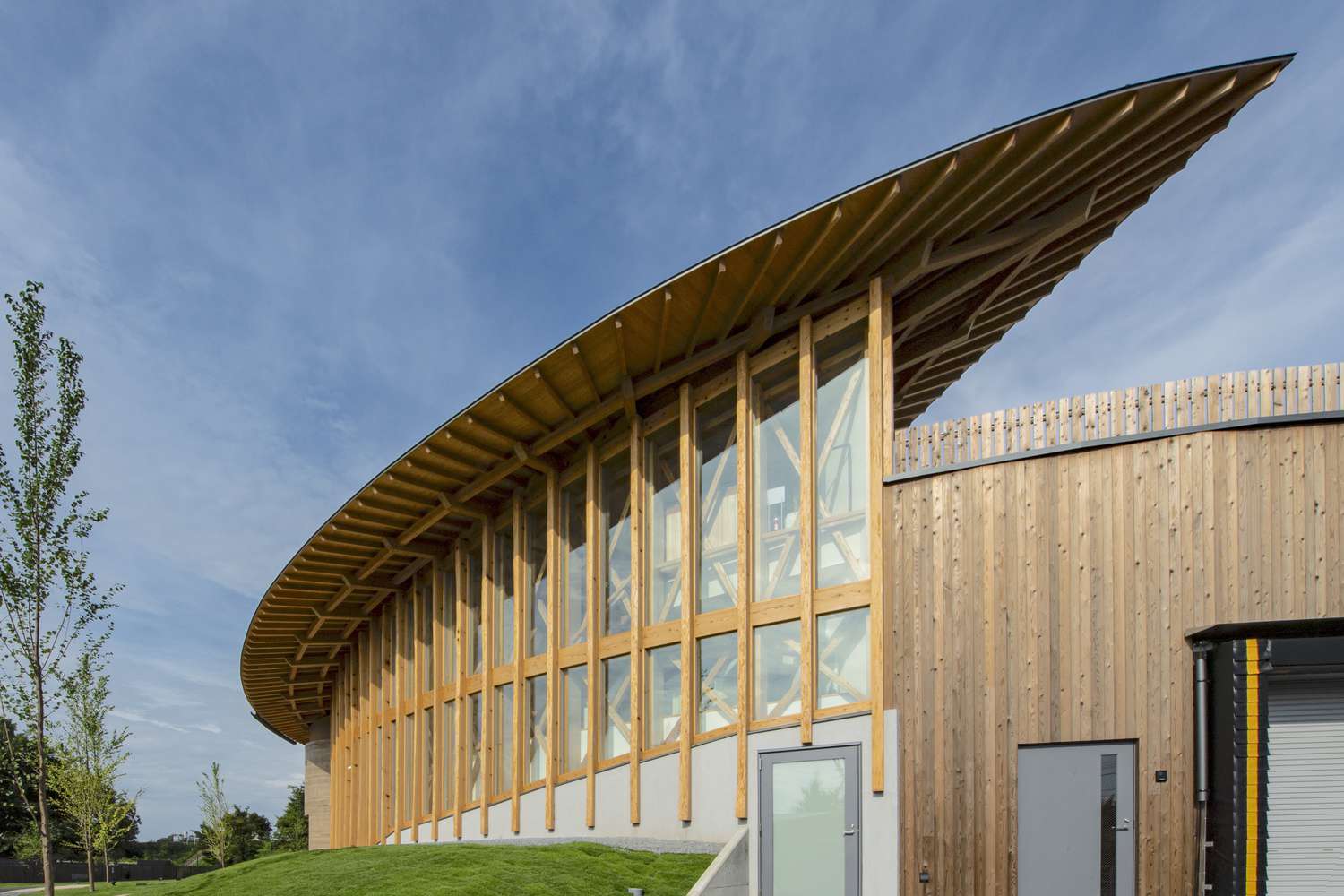[ad_1]
Inside the case of utilizing regionally sourced gives to assemble in an additional sustainable methodology, nothing is additional environmentally good than utilizing the soil appropriate beneath one’s toes. Organising with earth has been spherical for millennia and is accessible in a in depth number of methods that differ relying on native local weather and form of soil obtainable—from the one dug-out to additional trendy implementations like superadobe earthbag installations, AirCrete domes, and cutting-edge 3D printed earthen initiatives.
Over in Japan, we see a modern mixture of rammed earth and picket on this at the moment accomplished drawback by Tokyo-based firm Tono Mirai Architects. Seen correct proper right here beforehand for his or her serene retreat dubbed Shell Home, Mirai has achieved however one more beautiful drawback with rammed earth, this time on a a lot greater scale.
Takeshi Noguchi
The corporate’s Oyaki Farm drawback is positioned merely exterior metropolis of Nagano and encompasses a restaurant, a retailer, and fairly just a few areas to offer an area culinary specialty referred to as oyaki.
Takeshi Noguchi
There’s a substantial amount of historic earlier behind the standard oyaki, which is principally a dumpling made with wheat or buckwheat flour, stuffed with seasoned greens like eggplant, mushroom or pickles, or some type of protein, after which baked or grilled. It is sometimes typically referred to as one in all many area’s consolation meals and dates as soon as extra to the conventional Jomon interval of prehistoric occasions (14,500 to 300 BCE). As Meals In Japan explains, the emergence of oyaki is intently tied to the traditions and agricultural character of the world:
“Historically households would sit spherical an open griddle and eat collectively on a chilly snowy evening time time. [..] Nagano prefecture’s steep mountains and chilly native local weather made rice cultivation troublesome and produced poor yields in pre-industrial Japan. Farmers in Nagano turned to buckwheat or soba in its place. This flour was then blended with water and stuffed with native wild greens and generally seasoned with soy sauce and salt and resulting from this truth we get oyaki, steamed dumplings, or steamed buns for individuals who’ll.”
Like its namesake, the issue takes on a rounded type, derived from two circles that symbolize the interlocking relationships between this oyaki “manufacturing unit” and the panorama, together with the dialogue between the cafe and the bigger neighborhood by which it sits.
The architects clarify that the arc of the roof echoes the mountains all through the gap, with the roof beams being meticulously hand-chiseled by native craftspeople. Each of the tip corners of the curved roof make use of a standard configuration of rafters that fan out, making a dramatic roofline that mediates between earth and sky.
Takeshi Noguchi
The design methodology was to evoke “reminiscences of the earth” and the genius loci, or the “spirit of place,” together with to emphasise native pure gives and honor typical Japanese establishing methods. The intention was to “uplift” the positioning with a design that’s concurrently rooted to nature and to facilitate motion, change, enchancment and circulation inside. Because of the corporate says:
“[T]his development furthermore targets to be a spot the place ‘the development that was born and returns to the earth’ over a very very very long time axis of tens of 1000’s of years—utilizing lumber produced all through the prefecture and surplus soil from enchancment websites.”
Takeshi Noguchi
Beneath the sweeping arc of the metallic roof made with galvalume panels, we have now inside areas on the underside ground which is maybe open to most people. There are these beautiful halls which is maybe supported by 23-foot-tall (7-meter) drum pillars, which is maybe then lined with picket panels. Loads of the issue’s wood gives are cedar and cypress, sourced regionally from the shut by village of Nebamura.
Takeshi Noguchi
To remind firm of its intimate reference to the land, the spherical entrance corridor is made with rammed earth, utilizing soil that comes immediately from the positioning.
Takeshi Noguchi
The principle corridor is conceived as an “expertise dwelling” the place firm can get pleasure from oyaki made on-site, together with acknowledge the wood development and the rigorously framed views of the floor panorama.
Takeshi Noguchi
Up the staircase and as soon as extra exterior, we come to the “sky deck,” which affords firm broad views out to the serene panorama earlier, whereas they sit and eat an oyaki. This a part of the scheme affords what the Japanese would title shakkei, or “borrowed atmosphere,” whereby some distant view of nature is included into the design of 1’s yard or dwelling.
Takeshi Noguchi
As Okayi Farm reveals, earth development is proving to be as versatile on account of it was 1000’s of years beforehand, and it is nonetheless as related as ever as our buildings proceed to evolve—hopefully in concord with nature, and with a scrumptious regional dish to go together with the view. To see additional, go to Tono Mirai Architects.
[ad_2]
Present hyperlink
